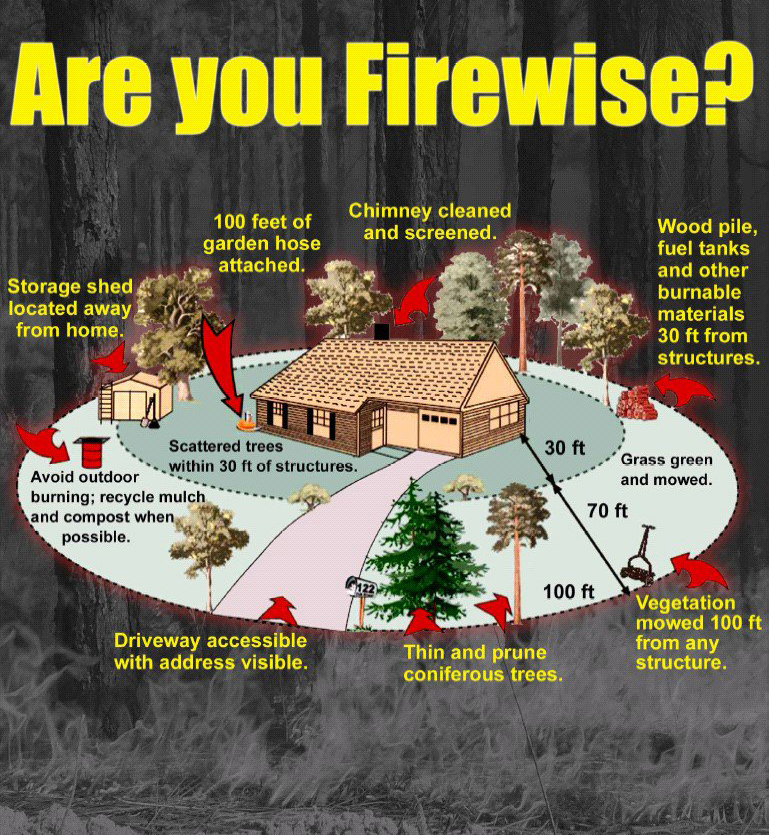
Every year many families unnecessarily lose their homes and possessions to wildland fire. These losses can be minimized if homeowners take the time to become aware of safety measures to help protect their homes and complete some effective actions.
You can minimize property damage and protect firefighters by hardening your home. Research tells us that most homes ignite during a wildfire as a result of embers or small flames. There are steps that homeowners can take to reduce the risk, with the most important efforts occurring on and immediately around the home. Look around your home for those small places where embers may sneak in to ignite a house fire.
We must all learn to live with wildfire and become more Firewise.
Use Fire Resistant Building Material - "The Best Thing That You Can Do"
- The roof and exterior structure of your dwelling should be constructed of non-combustible or fire-resistant materials such as fire-resistant roofing materials, tile, slate, sheet iron, aluminum, brick, or stone.
- Wood siding, cedar shakes, exterior wood paneling, and other highly combustible materials should be treated with fire retardant chemicals.
Maintain a Survivable Space - "Things You Can Do Today"
- Clean roof surfaces and gutters regularly to avoid accumulation of flammable materials such as pine needles, leaves, branches, etc.
- Remove portions of any tree extending within 10 feet of the flue opening of any stove or chimney and keep branches off the roof.
- Maintain spark arresters over all chimney or stovepipe flue openings - screens constructed of non-flammable material. Mesh openings of the screen should not exceed 1/2 inch.
- Clean debris from exterior attic vents and crawl space vents. Install 1/8-inch metal mesh screening to reduce embers from entering vents.
- Landscape vegetation such as shrubs should be spaced at least 15 feet apart to minimize fuel loading (the total amount of combustible material in a defined space).
- Remove low hanging branches from trees to height of 15 feet to remove ladder fuels (vegetation that allows a fire to "climb" up from the ground into the tree canopy).
- A fuel break should be maintained around all structures (refer to the Firewise Home Ignition Zone for spacing distances).
- Dispose of stove or fireplace ashes and charcoal briquettes only after soaking them in a metal pail of water for 24 hours.
- Store gasoline in an approved safety can away from occupied buildings.
- Propane tanks should be far enough away from buildings for valves to be shut off in case of fire. Keep area clear of flammable vegetation.
- All combustibles such as firewood, picnic tables, boats, etc. should be kept away from structures.
- Garden hose should be connected to outlet.
- Physical address should be visible on your home and posted at the driveway entrance.
- Names of roads should be indicated and street signs visible at all intersections in your community.
- All roads and driveways should be at least 16 feet in width.
- Each home should have at least two different entrance and exit routes.
- Have fire tools handy such as: ladder long enough to reach the roof, shovel, rake and bucket for water.








